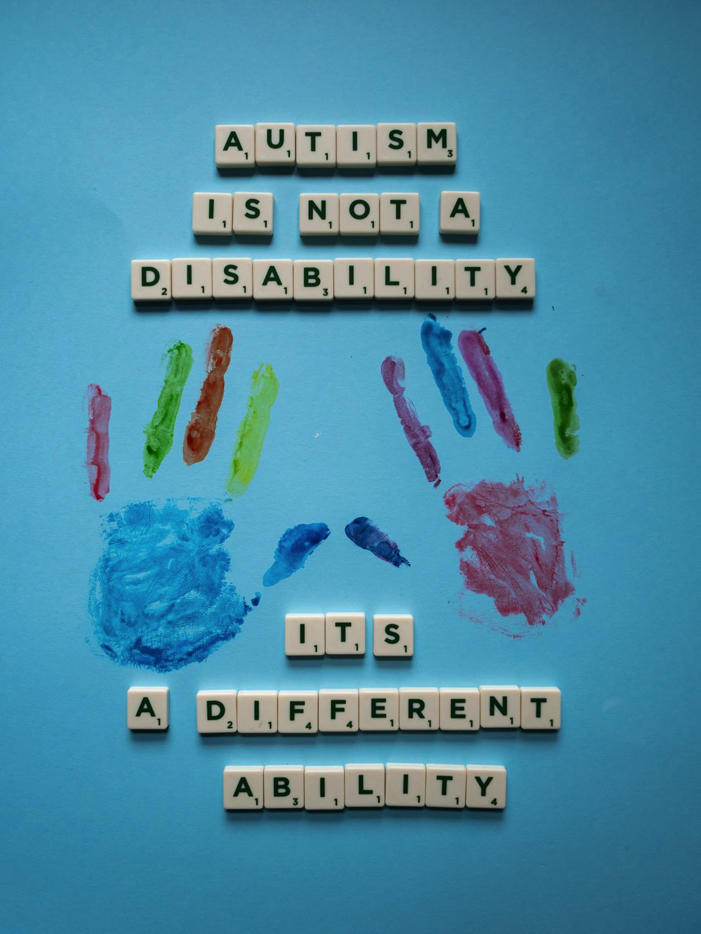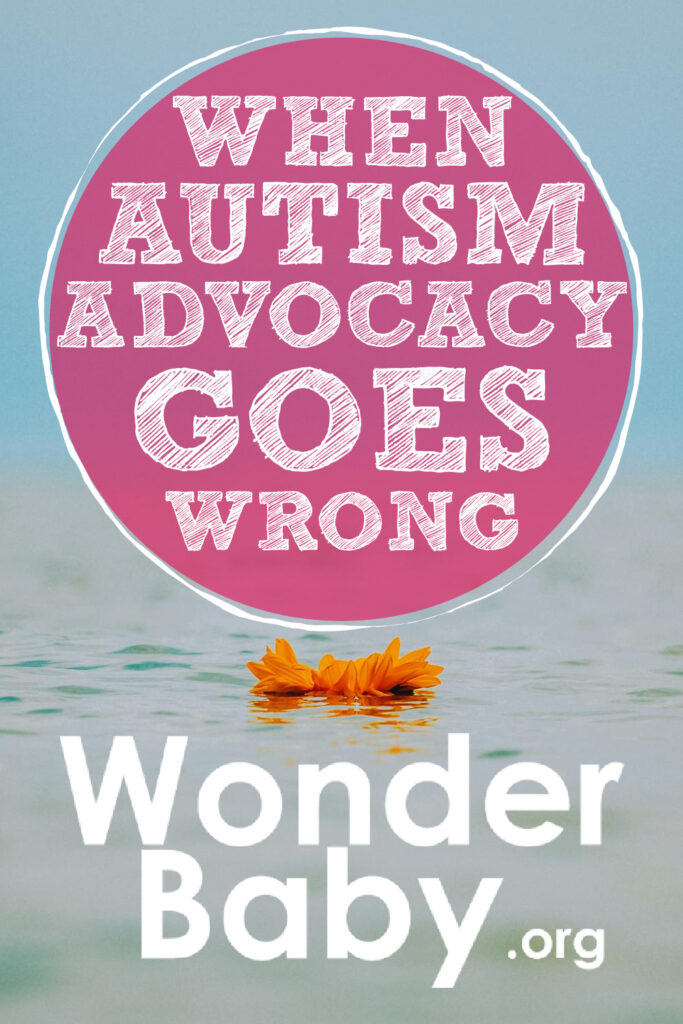When Autism Advocacy Goes Wrong: Supporting Parents of Profoundly Affected Children

If you’re not personally affected by autism or don’t work with autistic individuals, you might be unaware of the growing debate within the autism community. Even those in the autism community who seldom check social media might miss the increasing intensity of this discussion.
However, the debate is real and gaining momentum, with potential implications for other disability communities as well. Here’s the rundown.
Autistic Self-Advocates

Autistic self-advocates are usually adults with diagnosed autism who feel that they represent and have an obligation to support others with autism. Many autistic self-advocates view autism as a personality trait rather than a disorder. They believe that their autism is a fundamental and positive part of their identity and should be accepted and respected as such.
These self-advocates want to see a change in how society views autism, and they particularly want to support autistic children who they feel are often ignored or mistreated by their parents and caregivers.
Here’s their typical stance on the following topics:
- Decision-Making: As the name implies, self-advocates argue that autistic individuals should have a say in their care and treatment, emphasizing self-advocacy and autonomy. They don’t like to see parents making decisions for their autistic kids without input from their children or the broader autist community. They believe all people (without exception) have a right to have a say in their own medical and educational needs and that all legislative or policy decisions must be made with autistic people at the table. They have adopted the “Nothing About Us Without Us” slogan.
- Research and Cure: Some believe that research aimed at curing or mitigating autism is misguided and offensive, as it implies that being autistic is inherently negative and something to be fixed. They promote a pivotal shift in how society thinks about and represents autism.
- Language and Representation: Self-advocates are often particular about the language used to describe autism, preferring respectful and plain language that does not imply that autism is something negative or scary. The terms “high-functioning” or “severe” can be controversial and are not universally accepted within this group, as they can imply a hierarchy of abilities that many find reductive. Instead, they often refer to a wheel of traits (sensory sensitivity, literal reasoning, need for routines, etc.) rather than a ladder (high/low) of abilities. They don’t usually approve of the puzzle piece logo for autism either, as they see this as saying that “a piece is missing” in someone with autism.
Caregivers of Individuals with Severe Autism
Parents of individuals with severe autism often find themselves battling with self-advocates in online groups or comment threads. These parents view autism as a debilitating condition that significantly impacts the quality of life of their children, and they believe that their primary focus must be the safety and well-being of their kids with autism. These parents will often mourn a diagnosis of autism and don’t see autism as merely a character trait. Sometimes, while reaching out for help or support, parents suddenly find themselves in a position where they must defend their role as decision-makers.
Parents often have different views than self-advocates on the following topics:
- Decision-Making: Parents of severely autistic children argue that they need to make decisions on behalf of their children, who might be non-verbal, intellectually disabled, or have severe behavioral issues. For parents, the top priority is to ensure their children’s safety and well-being, not their autonomy.
- Research and Cure: Parents usually support research aimed at finding treatments or cures that could alleviate some of the severe symptoms of autism, believing that this could significantly improve their children’s lives.
- Language and Representation: They are often more focused on practical support and services rather than the nuances of language, prioritizing resources that can help their children lead better lives. With that said, however, you can still encounter differing opinions among parents about terms like “severe,” “profound,” or even “special needs.”
The Realities of Profound Autism
You may be wondering how views on autism can be so different. Part of the problem comes from the self-advocates insisting that they be included and consulted in anything related to autism. This may seem like a harmless request at first, but the slogan “Nothing About Us Without Us,” when applied to health concerns, can get sticky. Can a non-autistic parent make legal and medical decisions for an adult child with autism? Should families and caregivers have a say in legislation or civil policies? According to many self-advocates, the answer to these questions is no.
This can be seen clearly in the rules for some online autism support forums. The Autism Inclusivity Group on Facebook, for example, with (at this writing) almost 165K members and an average of over 20 posts per day, explicitly states that “Only AUTISTIC members are permitted to comment on posts. Self diagnosis [sic] is valid.” They don’t allow “functioning labels i.e. ‘mild’ or ‘severe’ autism, ‘low’ or ‘high’ functioning,” or any use of person-first language (as in “a child with autism”) since they see this as “harmful to the community.” Any parents violating these rules are subject to removal.
Many parents find themselves in traumatic and crisis situations concerning their kids’ behaviors. Consider the hardship and heartbreak of watching your child harm themselves by banging their head on the floor, or scratching or biting themselves. These behaviors can be so intense and frequent as to cause irreversible damage to the eyes or sinuses or even result in spinal injuries. Parents seeking interventions don’t have many options, and even crisis therapy centers might not be of much help.
Some families live in a sort of limbo, always fearing the next aggressive outbreak. Will their child hurt themselves or other family members? What about property damage? They feel isolated and unable to connect with others, maybe even unable to leave the house. Doctors will often write off aggressive behavior as “just something people with autism do” and miss diagnosing real ailments, like migraines or inflammatory arthritis, which might be the triggers for the behaviors.
When these families reach out for support, they find themselves being silenced by the autistic self-advocates, told that autism shouldn’t cause “distress” and that the real problem is their inability to properly communicate with their autistic (and non-verbal) child. The level of discourse is almost comical but also tragic for the families in crisis.
Potential Common Ground and Solutions

Bridging the gap between these two groups may seem impossible, but if we focus on what we all have in common, there may be room for growth and support!
- Work on Joint Initiatives: We can focus on projects or campaigns that address shared goals, such as increasing funding for autism services, improving public understanding of autism, and advocating for better educational resources. Try to find issues everyone can agree on and allow all voices to be heard.
- Develop Standard Terminology: Part of the problem that arises in this debate is that “autism” means something different to each group. The diagnostic criteria for autism were changed in 2013 (arguably through efforts from the self-advocacy crowd), moving multiple sub-diagnoses (such as PDD-NOS and Asperger’s) all under one umbrella term, “autism.” This led to a cultural shift with people viewing autism more as a “quirk” or “personality” rather than a disorder, and many families with kids with profound autism found themselves even more isolated and invisible. Having words to describe what we are talking about that we all agree on would help tremendously.
- Inclusive Policy Development: We need to make sure that policy-making bodies include representatives from both groups so that policies and funding decisions reflect a wide range of needs and perspectives. It can be difficult for parents of severely autistic kids to attend meetings, so we need to find flexible ways to include their perspectives.
- Flexible Intervention Models: Services should cater to the diverse needs within the autism spectrum, ensuring that both high-functioning individuals and those with severe autism receive appropriate support. Intervention models need to be adaptable to the varying needs of autistic individuals rather than a one-size-fits-all approach. This does mean that we need to allow for functioning labels (high-functioning vs profound autism, for example) in order to adjust services appropriately.
- Media Representation: Media is a perfect starting point for cultural change. Balanced media representation should showcase the diversity within the autism community and the potential for unity despite differences.
Websites and Organizations
Want to learn more? Visit the websites and organizations below to see how self-advocates and parents position themselves in this debate:
Autistic Self-Advocates
- Autistic Self Advocacy Network (ASAN): ASAN believes that the goal of autism advocacy should be a world in which autistic people enjoy equal access, rights, and opportunities.
- NeuroClastic: NeuroClastic aims for a more accepting, accommodating, and empowering future for autistic people. They strive to create a counter-point to messaging about autism that presents the autistic neurotype as a disease or disorder or a checklist of deficits.
- Autism Inclusivity: This is an Autistic-led group for parents and caregivers of Autistic children to ask questions of Autistic adults.
- Altogether Autism: A New Zealand-based organization that provides information that meets the needs of each specific request and is informed by lived experience, professional best practice, and trusted research.
- Autistic Women & Nonbinary Network: AWN is committed to disability justice, gender and racial equity, neurodiversity, and trans liberation with a focus on transformative and restorative justice in disability spaces.
Caregivers of Individuals with Severe Autism
- Profound Autism Alliance: The Profound Autism Alliance is committed to recognizing the unique challenges people with profound autism and intellectual disabilities experience.
- The Autism Cafe: A blog (and photo journal) of Eileen Lamb. Eileen is an author, photographer, podcast host, and Director of Social Media at Autism Speaks. She is the mother of two boys with autism and is on the spectrum herself.
- National Council on Severe Autism (NCSA): NCSA is committed to improving the long-term welfare of individuals, families, and caregivers affected by severe forms of autism and related neurodevelopmental disorders.
- Voice of Reason (VOR): VOR’s mission is to advocate for high-quality care and human rights for all people with intellectual and developmental disabilities (I/DD).
- National Autism Association (NAA): The mission of the National Autism Association is to respond to the most urgent needs of the autism community, providing real help and hope so that all affected can reach their full potential.
- Autism Parenting Magazine: Autism Parenting Magazine is an award-winning publication that aims to improve the quality of life for families affected by autism.

Related Posts

Autism
Developing Time Management Skills in Children with Autism: 7 Tips
Learn how you can use structure and visual aids to help your child with autism learn time management skills.

Autism
Occupational Therapy for Children with Autism: How It Can Make a Difference
Children with autism face challenges in many different areas. Occupational therapy can help children address these difficulties while having fun!

Autism, Behavior
OCD vs Autism in Children: How To Tell the Difference
OCD and ASD are fundamentally different, but their symptoms are very similar. Learn how to tell the difference to support your child.